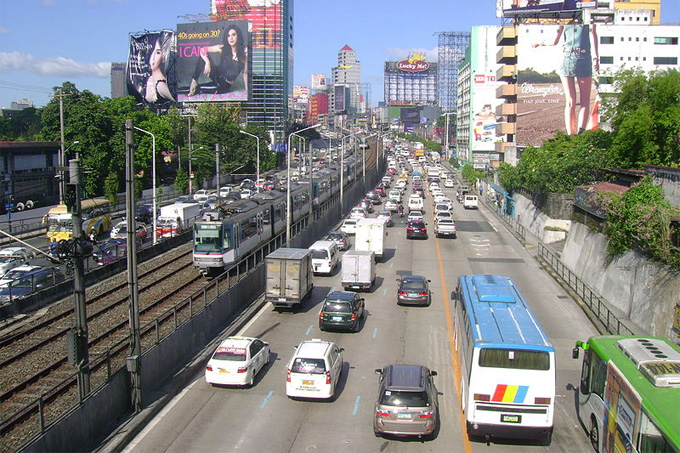
MANILA – Close to 180 motorists were cited with traffic violations by the Metropolitan Manila Development Authority (MMDA) during the first day of reimplementation of its “no-contact apprehension policy” on Friday.
As of Friday noon, 176 erring motorists were cited for overspeeding, beating the red light, number coding, swerving, illegal counterflow, blocking intersections, loading and unloading in prohibited zones, disregarding traffic signs, making illegal turns, illegal overtaking, entering the yellow lane, defying the closed door policy and bus segregation scheme, among others.
A 15-man team was tasked to monitor moving violations along major thoroughfares with the revival of the no physical contact apprehension policy.
The scheme, started around 10 a.m. Friday in major thoroughfares including Epifanio Delos Santos Avenue (EDSA), Commonwealth Avenue, Diosdado Macapagal Avenue, Marcos Highway, Roxas Boluevard, C5 Road, Quezon Avenue, and other major roads.
During a press conference at the MMDA metrobase in Makati City, MMDA Chairman Emerson Carlos said the policy aims to reduce traffic build-up in the metropolis by using cameras instead of apprehending drivers in the middle of the road.
Carlos said the policy using the CCTV will prevent erring motorists from bribing traffic officers and do away with the ‘padrino’ system where violators show calling cards of government or police officials to get their way out of traffic violations.
Unlike the usual manual ticketing, traffic violators will not be flagged down. The policy makes use of the agency’s 450 high definition closed circuit television cameras that take footage of violations committed by the driver of the vehicle while it is in motion.
Carlos said the quality of the cameras are high definition and can capture violations even at nighttime.
Carlos said the intention of the program is to “bring back discipline of drivers without the presence of traffic enforcers anytime of the day.”
When traffic enforcers accost violators, Carlos said there is opportunity for bribery, extortion and corruption.
“But because there is no human factor, such incidents are lessened,” he said.
Carlos said traffic enforcers will still be posted in places not covered by the CCTV cameras.
MMDA assured motorists who will be cited for traffic violations that they would be given ample time to contest their infractions.
Under the recently passed resolution of the Metro Manila Council, MMDA’s policy-making body, the agency will send summons or notice to the vehicle’s owner or operator to identify the driver of the vehicle during the time the traffic violation was captured by the CCTV (close circuit television) camera.
The notice which will be sent to the owner or operator contains the date, time, location and traffic violation. It also contains a statement that the motorist has the right to contest the violation before the MMDA-Traffic Adjudication Division (TAD) within seven days upon receipt of the summons.
Within 15 days from receipt of the adverse TAD resolution, the driver may still file a motion for reconsideration (MR). If the MR is denied, the driver may further file an appeal before the Office of the Chairman where the decision shall be final and executory.
The MMC resolution also said that upon lapse of the seven-day period to contest the infraction, the MMDA will send the final notice to the owner or operator of the vehicle.
If the violator fails to pay the fine upon the receipt of the final notice, the MMDA will include the vehicle license plate in the ‘alarm list’ and will be forwarded to the Land Transportation Office (LTO).
The driver will not be able to renew the vehicle registration until the fines are settled. With the improvements in the process in the no-contact apprehension policy, MMDA Chairman Emerson Carlos has expressed confidence that the drivers of public and private motor vehicles will be cooperative.
“What we are after here is to instill discipline among the motorists,” Carlos said.
Carlos said only “moving violations” will be apprehended and not “administrative violators” like drivers of colorum vehicles.
Carlos said all type of vehicles are covered by this policy, including motorcycles.